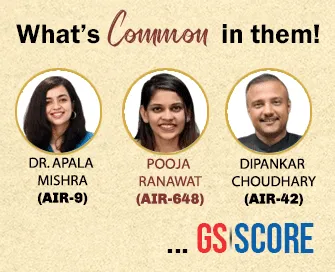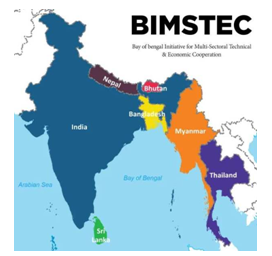

15th July 2025 (14 Topics)
Mains Issues
Context:
A spate of dowry-related deaths in recent months has underscored persistent structural and institutional failures, with NCRB data (2017–2022) revealing serious gaps in investigation, prosecution, and conviction despite existing legal safeguards like the Dowry Prohibition Act, 1961.
Legal Prohibition vs Ground Realities
- Existing Legal Framework:
- Dowry Prohibition Act, 1961 criminalizes giving, taking, or demanding dowry.
- Section 304B of IPC defines dowry death and prescribes punishment (minimum 7 years to life imprisonment).
- Section 498A of IPC penalizes cruelty by husband or relatives.
- Persistent Violations:
- Despite laws, an average of 7,000 dowry deaths reported annually (NCRB 2017–2022).
- Multiple incidents of torture, burning, or suicides related to dowry demands continue to surface, reflecting legal ineffectiveness in prevention.
Systemic Gaps in Investigation and Prosecution
- Delay in Chargesheeting:
- Only ~4,500 of the 7,000 annual dowry death cases are chargesheeted.
- Of those, ~70% are filed after prolonged investigations lasting over two months.
- 67% of pending investigations are delayed by more than six months (as of 2022).
- Judicial Backlogs and Acquittals:
- Of ~6,500 annual cases sent for trial, only ~100 see conviction.
- Over 90% remain pending or are quashed, discharged, withdrawn, or compromised.
- Weak evidence, hostile witnesses, and lack of victim support systems contribute to failure in conviction.
Geographic Distribution and Trends
- Regional Concentration:
- 80% of cases concentrated in Uttar Pradesh, Bihar, Jharkhand, Rajasthan, Haryana, Odisha, West Bengal, and Madhya Pradesh.
- Over 6,100 dowry-related murders were recorded from 2017–2022, with high rates in West Bengal, Odisha, and Bihar.
- Urban Pockets of Concern:
- Among 19 major cities, Delhi alone accounted for 30% of dowry death cases, followed by Kanpur, Bengaluru, Lucknow, and Patna.
Structural Factors Sustaining Dowry Practices
- Patriarchal Norms: Deep-rooted gender biases and societal norms continue to view women as financial liabilities.
- Inadequate Legal Awareness: Victims often unaware of rights or fear retribution.
- Economic Aspirations & Marriage Markets: Dowry seen as a tool for upward mobility.
- Underreporting and Social Stigma: Dowry demands often normalized; families hesitate to report due to fear of social alienation.
Institutional Gaps and Policy Limitations
- Police Apathy: Investigation delays and inadequate FIRs weaken prosecution.
- Judicial Delays: Lack of fast-track courts for such gender-based crimes.
- Witness Protection: Lack of support leads to witness intimidation or withdrawal.
- Forensic and Medical Negligence: Inadequate evidence due to improper post-mortem or forensic procedures.
Way Forward
- Reform Investigative Procedures:
- Enforce time-bound charge-sheeting and mandatory oversight on delayed investigations.
- Improve coordination between police, medical officers, and forensic labs.
- Strengthen Legal Infrastructure:
- Fast-track courts for dowry and domestic violence cases.
- Training police and judiciary on gender-sensitive protocols.
- Societal Intervention:
- Gender-sensitization programs in schools, colleges, and panchayats.
- Reward dowry-free marriages through public recognition and incentives.
- Institutional Support to Victims:
- Expand helplines, safe houses, and victim compensation schemes.
- Legal aid and counseling centres at district level.
- Data Transparency and Monitoring:
- Disaggregated data publication by NCRB including details on pendency, conviction, withdrawal, and state-wise bottlenecks.


Mains Issues
Context:
Europe is witnessing record-breaking heatwaves, with temperatures rising at 0.5°C per decade—over twice the global rate—highlighting its acute climate vulnerability and the urgent need for robust adaptation measures.
Reasons for Europe’s Faster Warming
- Arctic Proximity & Albedo Effect
- Arctic warming: 3–4x faster than global average.
- Ice loss reduces Earth's albedo ? more heat absorption ? higher warming.
- Proximity of Northern Europe to the Arctic amplifies this effect.
- Reduced Aerosols (Cleaner Air)
- Fewer aerosols ? less sunlight scattered ? more solar radiation absorbed.
- Air quality improvements have inadvertently led to more warming.
- Changes in Atmospheric Circulation
- Jet stream disturbances, double jet phenomena ? persistent heatwaves.
- Increased inflow of dry and hot continental air during summers.
- Urban Heat Island Effect
- Concrete and built-up areas retain more heat than vegetation.
- Urban areas in Europe exacerbate local warming, especially during nights.
- Rising Sea Surface Temperatures
- Warm North Atlantic and Mediterranean waters ? reinforce land warming via atmospheric moisture and energy transfer.
- Melting Glaciers
- Alps and other glacier-rich regions are rapidly losing ice.
- Reduces albedo and increases regional temperatures.
Impacts of Rapid Warming in Europe
- Heatwaves: More frequent, prolonged, and intense (e.g., 2024 SE Europe event).
- Extreme Rainfall & Flooding: Warmer atmosphere holds more moisture.
- Reduced Cold Stress Days: Record low days below freezing in 2024.
- Human Health Hazards: Heat-related deaths rising (e.g., 47,690 excess deaths in 2023).
- Agricultural Stress: Crop yield variability, droughts, water shortages.
- Increased Wildfire Incidences: Especially in Southern and Eastern Europe.
Way Forward:
- Immediate need for climate adaptation: Early warning systems, green infrastructure, climate-resilient urban planning.
- Strengthening of national heat-health action plans.
- Enhanced international cooperation, financing, and technology transfer for climate mitigation and adaptation.
|
European State of the Climate Report 2024: Key Findings
|


Prelims Articles
Context:
On SushrutaJayanti (14 July 2025), Union Ayush Minister Shri PratapraoGanpatraoJadhav inaugurated Shalyacon 2025, the 3rd National Conference on Shalya Tantra, at the All India Institute of Ayurveda (AIIA), New Delhi, to promote research, standardization, and innovation in Ayurvedic surgical practices.
About Shalyacon 2025:
- Organized by AIIA and National Sushruta Association (NSA), marking the 25th Annual Conference of NSA.
- Attended by over 500 participants, including Ayurvedic scholars, surgeons, researchers, and students from India, Nepal, and Sri Lanka.
- Theme: "Innovation, Integration, and Inspiration" in Shalya Tantra (Ayurvedic Surgery).
Key Announcements and Highlights:
- Minister of Ayush emphasized the need for scientific validation and global recognition of Ayurvedic practices.
- of India has authorized Ayurvedic practitioners to perform 39 surgical and 19 additional operations, promoting integrative medicine.
- Importance of standardizing surgical protocols for safety and quality assurance in Ayurvedic surgery.
Technological Integration in Ayurveda:
- AIIA, in collaboration with WHO, released a technical brief on AI in Traditional Medicine (September 2024).
- Use of AI tools, such as indigenous chatbots and unified Ayush applications.
- Digital platforms under Ayush include AHMIS, Ayush e-LMS, Namaste Yoga App, and Ayush Research Portal.
Live Surgical Demonstrations:
- 26 surgeries conducted, including laparoscopic, endoscopic, and anorectal procedures.
- Highlights Ayurveda’s growing clinical competence in minimally invasive techniques.
All India Institute of Ayurveda (AIIA):
- Inaugurated on 17 October 2017 (2nd Ayurveda Day) by the Prime Minister.
- Functions as a NABH-accredited tertiary care hospital, post-graduate training, and research centre under Ministry of Ayush.
- Has served over 30 lakh patients and performs a wide range of surgeries in the Shalya Tantra department.
Ayush in Global Healthcare Governance:
- India is actively contributing to AI governance in traditional medicine through the WHO-ITU FG-AI4H initiative.
- Aims to strengthen India's global leadership in integrative and digital Ayurveda.
|
SushrutaJayanti: Significance and Observance:
|


Prelims Articles
Context:
From the upcoming Monsoon Session beginning July 21, 2025, Lok Sabha Members will mark attendance through a Multimedia Device (MMD) installed at their division seats, replacing the traditional register-based method.
New Attendance Mechanism in Lok Sabha:
- Lok Sabha MPs will now register attendance digitally using:
- I-card scanning,
- Biometric thumb impression, or
- PIN entry.
- The system is operational at each MP's division seat, via Multimedia Devices (MMDs) previously used for accessing House documents.
Transition Period:
- The traditional attendance register in the lobby will remain temporarily to allow MPs to familiarise themselves with the new system.
Applicability & Exceptions:
- Mandatory for all Lok Sabha MPs to mark attendance for receiving daily session allowances.
- Ministers and the Leader of Opposition are exempt from attendance requirements.
Efficiency Gains Expected:
- Intended to decongest lobbies, prevent proxy attendance, and ensure actual participation in proceedings.
- Enhances transparency and accountability in legislative conduct.
Likely Extension to Rajya Sabha:
- Similar system likely to be adopted in Rajya Sabha
Legislative Context:
- Part of broader Parliament digitalisation under the NeVA (National e-Vidhan Application) initiative aimed at paperless and efficient parliamentary functioning.


Prelims Articles
Context:
The Ministry of MSME organized a one-day awareness programme on 14th July 2025 in Odisha to promote SC/ST entrepreneurship through the National SC-ST Hub and other MSME schemes
National SC-ST Hub (NSSH):
- Launched in 2016, it is a Central Sector Scheme under the Ministry of MSME, implemented by NSIC.
- Objective: Enhance participation of SC/ST entrepreneurs in public procurement and foster inclusive entrepreneurship.
- In line with the Public Procurement Policy 2012, the scheme aims to achieve the 4% procurement mandate from SC/ST MSEs.
- Offers services like Udyam Registration, GeMonboarding, tender participation assistance, and credit facilitation.
Other associated Schemes:
- PM Vishwakarma: Supports traditional artisans and craftspeople.
- PMEGP: Provides subsidy-linked credit for micro-enterprises.
- MSE-CDP: Aims at infrastructure development in MSME clusters.
- ZED Certification: Encourages quality and environment-friendly manufacturing.
- ESDP: Offers skill development training for aspiring entrepreneurs.
- Tool Rooms & Technology Centres: Facilitate precision training and tool-based support.
MSME Sector (Key Facts)
- MSMEs contribute ~30% to India’s GDP.
- They account for ~45% of India’s exports.
- Over 58 crore units are registered on the Udyam Portal, employing more than 28 crore people.


Prelims Articles
Context:
The 2nd BIMSTEC Ports Conclave was inaugurated on 14th July 2025 in Visakhapatnam to operationalize the BIMSTEC Maritime Transport Cooperation Agreement and promote regional maritime connectivity, trade, and tourism across Bay of Bengal nations.
Event Overview:
- Hosted in Visakhapatnam, Andhra Pradesh on 14–15 July 2025.
- Attended by ministers, officials, port authorities, and delegates from all BIMSTEC nations—Bangladesh, Bhutan, India, Myanmar, Nepal, Sri Lanka, and Thailand.
- Aimed at operationalizing the BIMSTEC Agreement on Maritime Transport Cooperation (AMTC).
Key Initiatives Announced:
- BIMSTEC Sustainable Maritime Transport Centre to be set up in Powai, Mumbai under the Indian Ocean Centre of Excellence for Sustainable Maritime Transport (IOCE-SMarT).
- Emphasis on PPP models, port-linked industrial zones, and cruise tourism infrastructure development.
- Launch of Joint Feasibility Studies for port-led industrial zones and regional supply chain integration.
Strategic Goals:
- Transform Bay of Bengal into a regional hub for maritime trade and cruise tourism.
- Promote port digitalization, green shipping, and cross-border workforce skill development.
- Foster investment in multimodal logistics parks, coastal economic zones, SEZs, and improve hinterland connectivity.
Kaladan Project Highlight:
- Recognized as a critical multimodal link connecting India’s Northeast to Myanmar and Bay of Bengal.
- Envisioned as part of the Act East Policy, with potential for regional integration under BIMSTEC framework.
India’s Leadership in BIMSTEC:
- India was the first country to ratify the BIMSTEC Maritime Transport Cooperation Agreement.
- The conclave aligns with India's Neighbourhood First and Act East policies, emphasizing regional connectivity and sustainable development.
|
BIMSTEC Membership and Geography:
Origin and Evolution:
Key Objectives:
|
|
|


Prelims Articles
Context:
The Index of Industrial Production (IIP) growth fell to a nine-month low of 1.2% in May 2025, highlighting weak industrial recovery despite government measures such as tax cuts, capital expenditure, and monetary easing.
Index of Industrial Production (IIP):
- IIP is a composite indicator that measures short-term changes in the volume of production of a basket of industrial products.
- It is released monthly by the National Statistical Office (NSO), Ministry of Statistics and Programme Implementation (MoSPI).
- The current base year is 2011–12, and it covers three sectors: Manufacturing (77.6% weight), Electricity (7.99%), and Mining (14.37%).
Gross Fixed Capital Formation (GFCF):
- GFCF is a component of Gross Domestic Product (GDP) that measures net investment in fixed capital (machinery, equipment, buildings, etc.).
- Despite post-tax corporate profits increasing due to a corporate tax cut in 2019 (from 30% to 22%), private sector GFCF in machinery and equipment grew only 35% over 4 years (FY20–FY23).
- This undermines the goal of increasing manufacturing share in GDP and limits the creation of high-quality formal employment.
Crowding-in vs. Crowding-out Debate:
- Crowding-in occurs when public investment stimulates private investment due to improved infrastructure and demand conditions.
- Challenges to crowding-in:
- High import content of capital projects dilutes domestic demand.
- Long gestation periods of infrastructure projects delay impact.
- Low labor-intensity limits consumption generation.
- Crowding-out risk is less relevant now due to underutilized private investment capacity and ample liquidity.


Prelims Articles
Context:
Retail inflation (CPI) for June 2025 eased to 2.1%, the lowest in 77 months, while wholesale inflation (WPI) registered a contraction of -0.13% for the first time in 20 months, primarily driven by falling food and crude oil prices.
CPI and WPI Trends:
- Consumer Price Index (CPI) inflation fell to 1% in June 2025 from 8.4% in June 2024, largely due to sustained deflation in food items such as vegetables, pulses, spices, and meat.
- Wholesale Price Index (WPI) contracted by -0.13%, lowest since October 2023, showing continued decline in wholesale prices for crude petroleum and natural gas (-12.3%) and food articles (-3.75%).
Sectoral Highlights (CPI):
- Food and Beverages saw a -0.2% contraction, indicating the eighth straight month of food inflation easing.
- Fuel and Light inflation eased to 2.55%, down from 2.8% in May, despite a low base of -3.6% in June 2024.
- Housing Inflation increased marginally to 3.24% from 3.16% in May.
- Key Drivers of Disinflation:
- A favourable base effect from 2024.
- Healthy monsoon and agricultural output, improving food supply.
- Global crude oil price decline, aiding both retail and wholesale inflation moderation.
Policy Relevance:
- A CPI below the RBI’s medium-term inflation target of 4% could influence monetary policy decisions, potentially leading to rate cuts or a dovish stance.
- Low inflation benefits real household income, reduces cost pressures on MSMEs, and boosts consumption demand.


Prelims Articles
Context:
A first-of-its-kind survey (March–May 2025) documented 43 grassland-dependent bird species in Kaziranga National Park, underscoring its critical role as a grassland biodiversity hotspot in the Brahmaputra floodplains.
Location & Geography
- Located in Assam, along the Brahmaputra River between Brahmaputra floodplains and the Karbi (Mikir) Hills.
- Traversed by Diphlu River and National Highway 37.
- Part of the Eastern Himalayan Biodiversity Hotspot.
Prominent Fauna
- "Big Five" mammals: Great Indian One-Horned Rhino, Royal Bengal Tiger, Asiatic Elephant, Asiatic Water Buffalo and Swamp Deer
- Others: Sloth Bear, Hog Deer, Sambar, Panther, Gaur, Capped Langur, Hoolock Gibbon.
- Aquatic: Gangetic River Dolphin in oxbow lakes.
- Avifauna: Migratory and resident birds from Australasia and Indo-Asian Flyways.
- Eg: Baer’s Pochard, Greater/Lesser Adjutant, Ferruginous Duck, Asian Openbill.
Vegetation and Ecosystem
-
- Dominated by Wet Alluvial Tall Grasslands (~2/3rd area).
- Interspersed with Tropical Moist Deciduous and Semi-Evergreen Forests.
- Known for Elephant Grasses, swamplands, and seasonal wetlands.
Avian Biodiversity Documentation in Kaziranga:
- A total of 43 grassland bird species were documented across Kaziranga’s three wildlife divisions, using field observation and passive acoustic monitoring.
- Notable species recorded include:
- Critically Endangered: Bengal Florican
- Endangered: Finn’s Weaver, Swamp Grass Babbler
- Vulnerable (6 species): Black-breasted Parrotbill, Marsh Babbler, Swamp Francolin, Jerdon’s Babbler, Slender-billed Babbler, Bristled Grassbird
- The presence of Finn’s Weaver breeding activity is a key indicator of healthy wet grassland ecosystems.
Ecological and Conservation Significance:
- The wet grasslands of Kaziranga are ecologically rich but have remained under-surveyed in India compared to dry grasslands in Gujarat and Rajasthan.
- Kaziranga’s ecosystem is a mosaic of grasslands, forests, and wetlands spread across 1,174 sq. km in the floodplains of the Brahmaputra.
- Grassland birds are often habitat-specific and cryptic, making this systematic monitoring vital for long-term conservation efforts.
Technological Innovation in Wildlife Monitoring:
- Passive acoustic recorders were used for the first time in Kaziranga for avian research.
- This non-invasive method enabled continuous species monitoring in inaccessible or high-risk areas, improving detection accuracy for elusive bird species.
- The study sets a scientific precedent for future biodiversity assessments in wet grassland habitats across India.


Prelims Articles
Context:
Denmark has proposed a pioneering amendment to its copyright law aimed at countering the misuse of AI-generated deepfakes by granting individuals legal ownership over their body, voice, and facial features, thereby enabling them to demand takedowns and compensation for unauthorized digital imitations.
What Are Deepfakes?
- Defined as AI-generated hyper-realistic digital imitations of a person’s face, body, or voice.
- Increasingly used in fraud, misinformation, harassment, and identity theft.
Denmark’s Legal Response
- Proposed amendment to Denmark’s copyright law—first of its kind in Europe.
- Aims to recognize the individual’s identity (body, face, voice) as intellectual property.
Key Provisions of the Bill
- Right to identity: Every individual will own the rights to their facial and vocal likeness.
- Platform liability: Online platforms must remove unauthorized digital imitations upon request.
- Compensation: Victims can claim compensation for misuse of their identity.
- Exceptions: Parodies and satire are explicitly protected


Prelims Articles
Context:
The National ODOP Awards 2024 were held on 14th July 2025 in New Delhi, where Union Commerce Minister announced upcoming guidelines to support first-time exporters and expand into new markets under the ODOP initiative.
About One District One Product (ODOP) Initiative:
- Launched by the Department for Promotion of Industry and Internal Trade (DPIIT), Ministry of Commerce and Industry.
- Aims to identify, brand, and promote one unique product from each district of India to enhance its export potential and boost rural and district-level economic growth.
- As of 2025:
- Over 1,200 unique products have been identified from 773 districts across the country.
- Products span agriculture, food processing, textiles, handlooms, handicrafts, and manufacturing.
Key Announcements in 2024–25:
- Commerce Ministry will issue guidelines to support first-time exporters, target new markets, and enhance ODOP product branding.
- PM Ekta Mall approved for 27 states to promote ODOP and GI-tagged products.
- Emphasis on branding, packaging, sustainability, and digital marketing of ODOP products.
- Bihar achieved 100% ODOP product coverage in all 38 districts and was categorized as Category A under the Industrial Investment Promotion Policy.
ODOP Awards 2024 – Highlights:
- Organized by: DPIIT
- Purpose: To recognize States, UTs, Districts, and Indian Missions Abroad for excellence in promoting ODOP.
- Applications Received: 641 total entries (587 from districts, 31 from States/UTs, 23 from Indian Missions).
- Award Categories:
- Indian Missions Abroad: Singapore (Gold), New York (Silver), Vancouver (Bronze)
- States/UTs (Category A): Andhra Pradesh, Maharashtra, Punjab, UP (Gold); MP (Silver); Gujarat (Bronze)
- District (Category A - Agriculture): Guntur (Chillies), Ratnagiri (Alphonso), Pulwama (Saffron), etc.
- District (Category B - Non-Agriculture):Bapatla (Silk Sarees), Ganderbal (Willow Wicker), Anakapalli (Etikoppaka Toys), etc.


Editorials
Context:
India is intensifying its diplomatic engagement with Europe through high-level visits, strategic dialogues, and trade negotiations, signalling a shift toward deeper strategic and economic cooperation amidst global geopolitical realignments.
Strategic Realignments and Shared Vision
- Shift from Non-Alignment to Multi-Alignment:India has transitioned from its traditional non-aligned posture to multi-alignment, engaging with diverse global players including the European Union (EU) to preserve strategic autonomy in a bipolar world dominated by U.S.–China rivalry.
- Europe’s Pursuit of Strategic Autonomy:Key EU members like France and Germany have embraced the concept of strategic autonomy, aiming to reduce overdependence on the U.S., recalibrate NATO reliance, and establish Europe as an independent pole of global influence.
- Multipolarity as a Common Strategic Goal:Both India and Europe seek to advance a multipolar world order grounded in international law, plural values, inclusive institutions, and multilateral cooperation, as a counterbalance to rising authoritarianism and geopolitical coercion.
Economic, Trade, and Technology Synergies
- Surge in Bilateral Trade and Investment:Between 2015 and 2022, EU FDI in India grew by 70%, with France's investment alone rising by 373%, while EU imports from India have doubled—indicating a strong but under-leveraged trade potential.
- India–EU Trade and Investment Agreement (TIA):The delayed India–EU TIA must be expedited with an Early Harvest Agreement, while addressing India's concerns regarding the European Carbon Border Adjustment Mechanism (CBAM), to ensure climate justice and avoid disguised protectionism.
- Digital Public Infrastructure and Innovation:Europe’s deep-tech leadership complements India’s scalable digital public goods. Joint leadership in clean energy, AI governance, semiconductor manufacturing, and biotech can reshape global digital and green transitions.
Security, Defence, and Global Governance
- Defence Cooperation and Co-Development:Europe is a key arms supplier to India; under Atmanirbhar Bharat and ReArm 2025, there is unprecedented scope for technology transfer, joint production, and strengthening defence industrial bases on both sides.
- Maritime and Cyber Security, Counter-Terrorism:Strategic cooperation extends to maritime domain awareness, space collaboration, cybersecurity, and tackling terrorism, especially pressuring Pakistan over state-sponsored extremism—an issue that affects both regions.
- Shaping Global Norms through Multilateralism:India and Europe are aligned on reforming multilateral forums (UN, WTO) and co-leading Global South-centric frameworks, resisting hegemonic binaries and preserving a rules-based, democratic global order.
PracticeQuestion:
"The evolving India–Europe partnership reflects a shift from transactional diplomacy to a value-based strategic engagement. Critically analyse this shift in the context of current geopolitical transformations and its implications for India’s foreign policy." (250 words)


Editorials
Context:
On World Youth Skills Day (15th July), attention has been drawn to India’s persistent gap between the high proportion of female STEM graduates and their low workforce participation, highlighting the need for coordinated efforts by government and industry to address systemic and structural barriers.
Persistent Paradox in Women’s STEM Participation
- STEM Education-Employment Disconnect: Despite having 43% of global STEM graduates as women, only 27% of India’s STEM workforce comprises women, revealing deep systemic gaps between education and employment.
- Rising Labour Participation with Regional Disparities: As per PLFS 2023–24, the Female Labour Force Participation Rate (FLFPR) reached 41.7%—but rural women (47.6%) outperform urban women (25.4%), indicating structural and socio-cultural constraints in formal sectors.
- Global and Domestic Stakes: According to McKinsey Global Institute, including 68 million more women in the workforce could raise India’s GDP by up to $700 billion by 2025. The World Bank links a 1% GDP growth with a 50% female workforce participation rate.
Governmental Frameworks for Inclusive Skilling
- National Education Policy (NEP) and Vocational Push: NEP 2020 integrates skills and life education. Government is modernising ITIs and expanding vocational skilling to rural areas, linking skilling with employability and inclusiveness.
- Gender-Budgetary Commitments in Union Budget 2025–26: Gender budget allocation rose to ?4.49 lakh crore (8.8% of total budget), including schemes like term loans for women entrepreneurs and establishment of National Skill Training Institutes.
- Policy Alignment with Viksit Bharat Vision: Women’s economic empowerment is a pillar of inclusive growth under the Viksit Bharat initiative. Schemes like Skill India, Digital India, and PM VishwakarmaYojana further this empowerment framework.
Role of Industry in Enabling Gender-Responsive Employment
- Cultural Barriers in Technical Domains: Deep-rooted gender norms (“mechanical is masculine”) hinder entry of women into STEM and technical jobs. UNESCO and World Bank note that cultural perceptions, not competence, are key obstacles.
- Corporate Interventions for STEM Inclusion: Initiatives like UN Women’s WeSTEM—backed by Micron Foundation—partner with state governments to ensure skilling, mentorship, and mindset shifts via safety trainings, family engagement, and visible role models.
- Industry-Driven Ecosystem for Career Continuity: Structured mentorship, industry-academia partnerships, flexible workplace policies, and safety assurance are vital to support women through life transitions and ensure STEM career retention.
Practice Question:
“Despite having one of the highest proportions of female STEM graduates globally, India struggles with low female participation in its STEM workforce. Discuss the structural, societal, and economic barriers to this paradox and evaluate the role of government and industry in addressing them.” (250 words)


Editorials
Context:
A recent global report sparked controversy by stating that India has the lowest consumption inequality yet the highest income inequality, raising concerns over data interpretation and methodological inconsistencies.
Misinterpretation of Inequality Metrics
- Contradictory Indices – Consumption vs. Income:India recorded a Gini coefficient of 0.25 for consumption in 2022–23, the lowest globally. In contrast, income inequality estimates—derived from modeled data—placed India among the most unequal, despite lacking household-level income data.
- Miscommunication in Policy Discourse:Official communications equated India’s low consumption inequality with overall socioeconomic equality, without distinguishing it from income-based metrics, resulting in misleading policy perceptions.
- Synthetic Estimations – Methodological Weaknesses:Income inequality estimates rely on synthetic distributions from databases like WID, based on assumptions rather than direct surveys, introducing bias and reducing empirical validity.
Data Credibility and Institutional Contradictions
- Absence of Harmonized Income Data Across Economies:Developing nations, including India, often lack standardized income datasets. Global inequality estimates fill these gaps using imputed data, which may diverge sharply from ground realities.
- Divergence in Domestic vs. International Data Sources:India’s household-level consumption data, from NSSO and PLFS surveys, provide granular insight. Meanwhile, global models that bypass such empirical sources introduce substantial inaccuracies.
- Comparative Evidence – India and South Africa:South Africa, with an officially reported Gini coefficient of 63.0 for income, is considered the most unequal. India’s real consumption Gini of 25.5 discredits any suggestion of it leading income inequality rankings.
Broader Implications and Recommendations
- Risk of Flawed Policy Formulation:Erroneous inequality interpretations can distort social policy frameworks, misguide welfare interventions, and misallocate resources at both national and global levels.
- Importance of Transparent Data Collection:Developing countries require investments in real-time, standardized income and consumption surveys to strengthen evidence-based policymaking and avoid dependency on external modeled estimates.
- Responsibility of Global Institutions:Global agencies must recognize data limitations, avoid overreliance on synthetic estimations, and adopt stringent methodological standards to maintain credibility in international statistics.
Practice Question:
“Discuss the challenges associated with measuring income and consumption inequality in developing economies. Critically analyse the implications of relying on synthetic datasets for international inequality comparisons, with reference to India.” (250 words)





